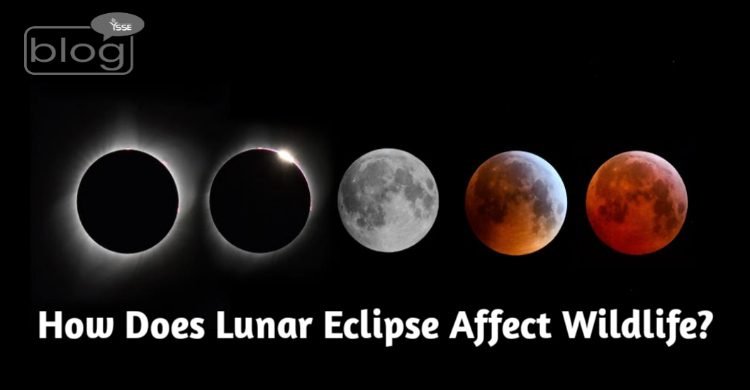Imagine a completely dark world, not because the power went out but because the Earth’s shadow is moving across the moon.
An eclipse of the moon may be unique to people who like to look at the stars, but it can be very confusing and dangerous for animals.
What is Lunar Eclipse?
A lunar eclipse, a celestial event, occurs when the Earth brings itself between the Sun and the Moon and casts its shadow on the Moon.
This only happens during a full moon when the moon’s orbit brings the Earth and the sun into alignment. During a total lunar eclipse, the Moon may take on a reddish hue due to Rayleigh scattering.
Unlike solar eclipses, lunar eclipses are safe to observe without special equipment and can be seen from anywhere on Earth at night.
A lunar eclipse only lasts a few hours, but it changes the normal light cycle that many animals need to do their essential functions.
Take a look at the world of animals that come out at night and see how these “lights-out” times make them feel. It could be fear or confusion.
Night Shift Gone Wrong : Navigation Got Crashed.
The moon helps many animals that come out at night, like bats, moths, and some birds, find their way. This vital guide disappears during a moon eclipse, leaving them lost and unsure of where to go.
Imagine that a bat uses the moon to echolocate its way back to its roost. If the moon went away all of a sudden, it might have a hard time getting back home.
Migratory birds that use the Moon and stars to find their way over long distances may have to take different routes or even wait temporarily because of a lunar eclipse.
These animals might need a little extra time to set their internal GPS, just like we do when we’re trying to find the light switch in the dark.
Hunting for Predators : A Party Under the Blood Moon.
To humans, the eerie red glow of a total lunar eclipse, also known as a “blood moon” may seem sweet, but it can be a nightmare for small herbivores that are usually preyed upon by predators.
Since nocturnal carnivores can see well in the dark and herbivores can’t see so well, they are easier to catch. Animals such as rabbits, pigs and rats that use camouflage to hide at night also become a snack for carnivores.
Moreover, some birds that hunt use predation to their advantage. Because they can see so well at night, owls and bats can still see well enough to hunt during an eclipse. It’s like spreading out with a little less light for them, giving them a chance to catch lost and confused insects.
What are the Long-Term Effects of the Short-Term Disruption?
Other effects of lunar eclipse on wild animals:-
– Inconsistency in the daily life of animals;
– Behavioral problems occur in animals;
– Disturbances in the migration of migratory birds;
– Increased levels of violence in animals;
– Reproduction cycle of animals is disrupted.
Although lunar eclipses can temporarily disrupt wildlife behavior, the overall effects are usually minimal and short-lived.
Most wildlife species are resilient and can adjust their behavior in response to natural events, returning to normal activities when conditions return to normal.
When the Moon Darkens Again ?
The next time you’re looking at a wonderful view of a lunar eclipse, think about wildlife. While we marvel at the dancing stars, wildlife can get temporarily lost, miss a meal or have an awkward encounter as part of their nightly routine.
But don’t worry—as soon as the Earth’s shadow passes and the moon shines again, the animal world will return to its nocturnal symphony.
To see more blogs, click here
Writer
Khairul Islam Shovo
Intern, Content Writing Department
YSSE

